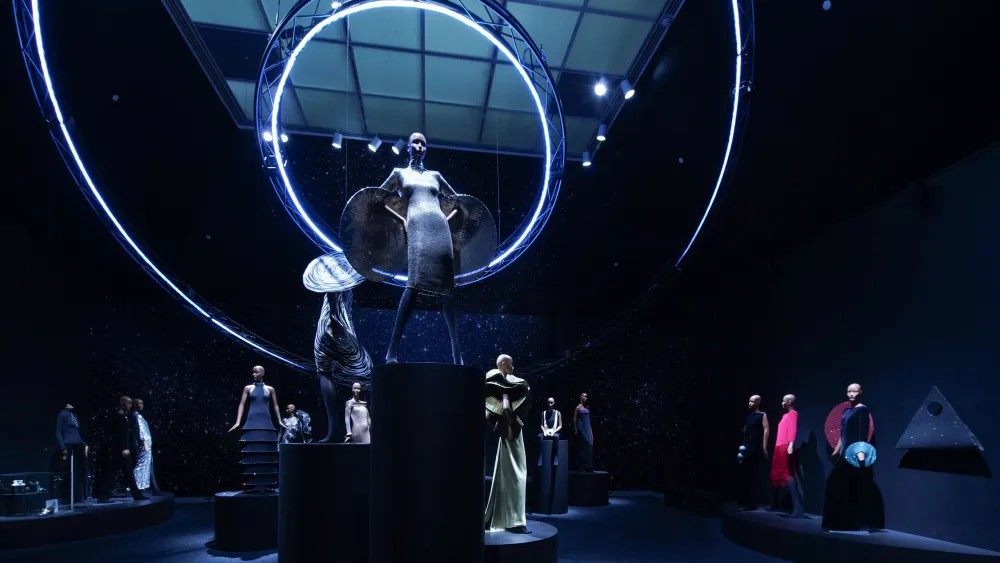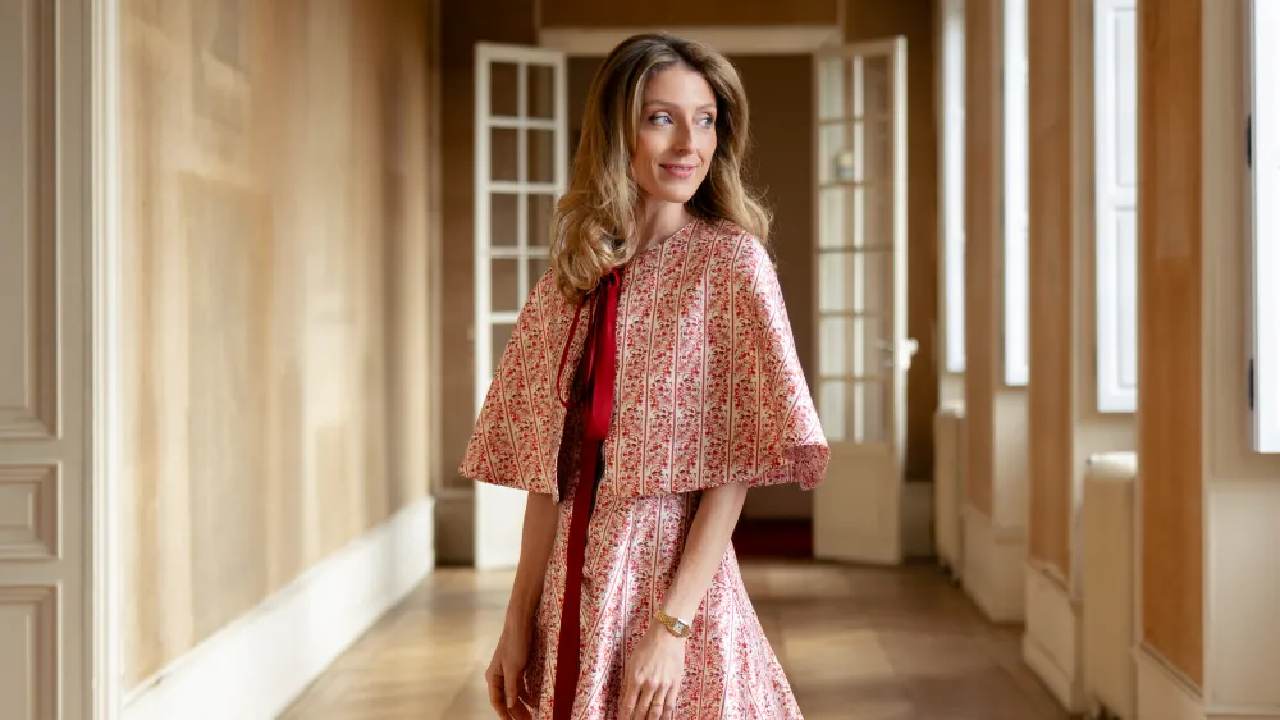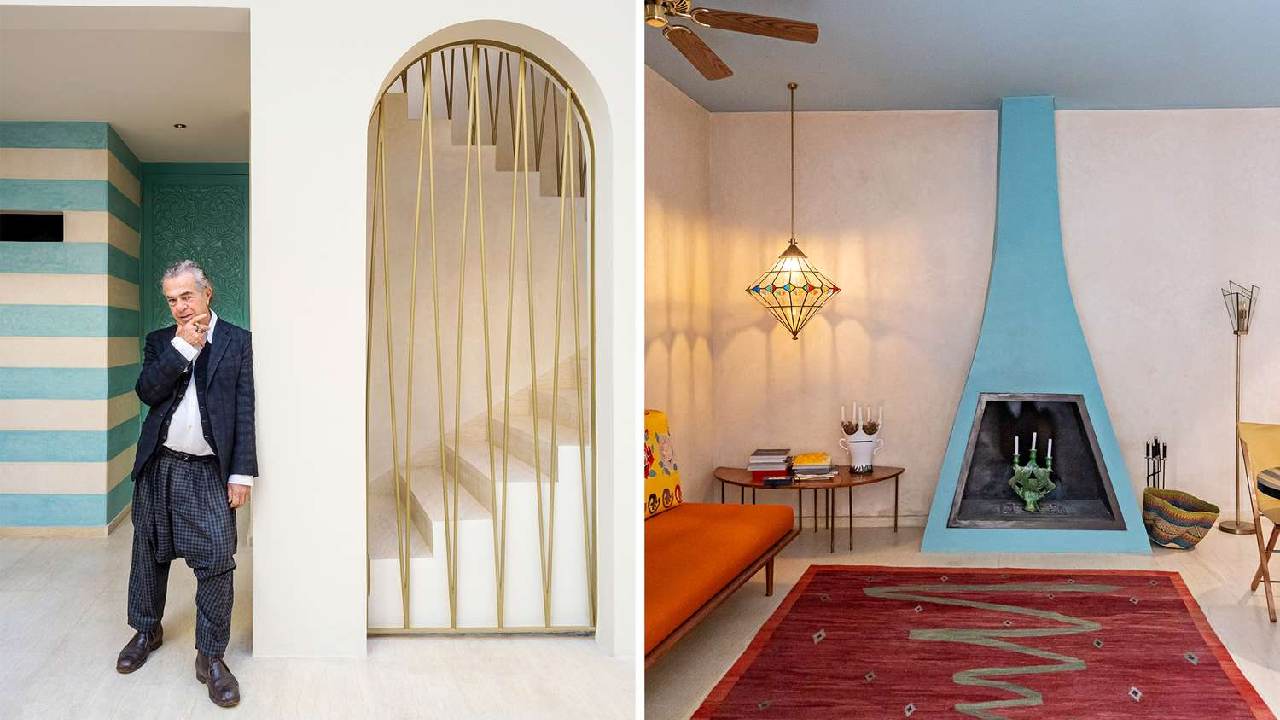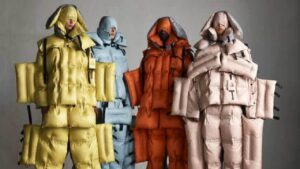Pierre Cardin’s Futuristic Revival: A Bold Attempt to Redefine the Avant-Garde
PetitePaulina – After seeing Matthieu Blazy’s clever reboot of Chanel earlier this week, many wondered what could make Pierre Cardin feel modern again. The brand’s latest show, held at its flagship on Rue du Faubourg Saint-Honoré in Paris, tried to answer that question with bold, futuristic flair.
Designed by Rodrigo Basilicati, Pierre Cardin’s nephew and chosen successor, the show explored the boundaries between art, fashion, and science fiction. The result was imaginative, daring, and undeniably Cardin — though not without controversy.
Rodrigo Basilicati’s Vision: A Return to the Future
Basilicati built the collection around modular futurism, a concept rooted in Cardin’s legacy but reinterpreted for today. Almost every look began with a black or white back-zipped catsuit for men and women. The sleek silhouettes immediately brought to mind Star Trek: The Next Generation.
While the inspiration leaned toward nostalgia, the designer’s goal was clear: revive Cardin’s experimental DNA and remind audiences that fashion can still be a space for exploration, not just consumption.
“Read More : Vasiliki Petrou Launches Veralis Group: A New Era for Beauty, Wellness, and Longevity”
Wearable Sculptures and Modular Design
The real spectacle came from the sculptural attachments that unfolded from the catsuits. Each look functioned like a wearable experiment.
One model wore an orange bib that cascaded dramatically down the chest. Another appeared with green fans velcroed to the shoulders, spreading like wings. There were even yellow wave-shaped structures jutting from the hips, turning the body into a moving sculpture.
Basilicati’s designs blurred the line between fashion and performance art. While visually stunning, they raised a question — are these clothes meant for people or for the museum?
Balancing Legacy and Modernity
Pierre Cardin became famous for his futuristic imagination, creating designs that looked beyond their time. Basilicati faces the challenge of updating that legacy without losing its essence.
This collection emphasized concept over practicality, suggesting that the house of Cardin is more of an experimental atelier than a commercial brand. Yet, in an era dominated by wearable basics, his commitment to pushing boundaries felt refreshingly defiant.
“Read More : Spring 2026: A Season of Reinvention and Reverence in Fashion”
Relevance in the Modern Era
As the final looks glided down the runway, one question lingered: Who would wear these pieces today? The modular structures, though fascinating, seemed disconnected from everyday life.
Still, within the chaos of colors and forms, there was a poetic boldness that celebrated Pierre Cardin’s original spirit — one that valued imagination over conformity. Basilicati seemed less concerned with trends and more focused on keeping Cardin’s cosmic vision alive.
A Beautiful Enigma
The show may not have made Pierre Cardin instantly relevant, but it succeeded in starting a conversation. Basilicati’s fearless experimentation reminded the audience that fashion can still provoke, confuse, and inspire.
In a world obsessed with simplicity, his avant-garde approach stood out. It was a reminder that innovation doesn’t always mean comfort — sometimes, it means daring to dream.
Whether these designs find a market remains to be seen, but Pierre Cardin’s futuristic pulse still beats strongly, echoing the house’s timeless message: fashion is not only about what we wear, but what we imagine.













